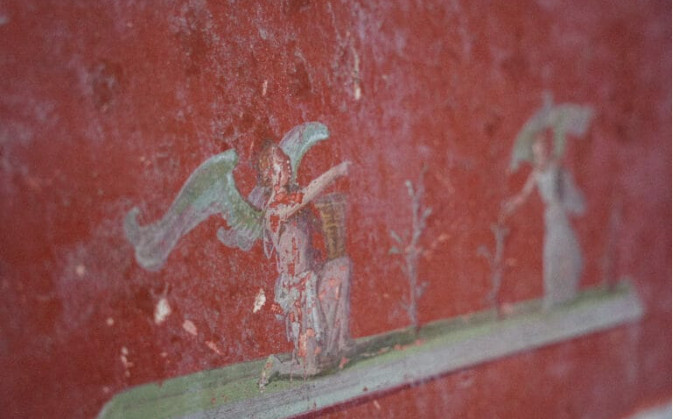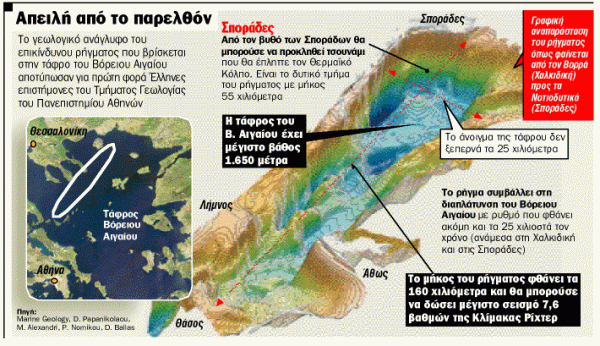New Discovery in Pompeii sheds light on the Dionysian mysteries

When Vesuvius exploded in 79 AD, the huge explosion buried Pompeii in an unmistakable layer of ash and debris of 19 meters.
Since the excavations in the area began in 1748, one discovery after another revealed rich, painful and complicated details of how life was almost 2,000 years ago in the city.
A new discovery in Pompeii sheds light on the Dionysian mysteries
As Vesuvius buried everything in the city of Pompeii, the ash provided an extremely protective cover for sensitive frescoes and constructions, such as an extensive frescoes recently discovered in a symposium hall that « sheds light on the mysteries of Dionysus ».
The mortal
The large-scale painted frieze shows the procession of Dionysus, god of wine, along with Satyrs and Menades- who are simultaneously depicted as dancers and hunters.
In the center of the composition, a woman is accompanied by Silenos, an elderly companion and teacher of Dionysus, who holds a torch.
The woman « suggests that she is initiated, » says the Ministry of Culture, « a mortal woman who, through a nightclub, is to be initiated into the Dionysian mysteries of God who dies and regenerates and promises her own followers. »
Occuping three walls of a building, in the so -called Regio IX area, the painting extends to three walls and depicts a frieze known as « Megalography », derived from the Greek word « big painting » and includes a circle of works with almost natural figures. Archaeologists place the fresco around 40 to 30 BC.
Live figures
Curiously for art historians, all forms are depicted on a pedestal « as if they were statues, » the Ministry of Culture says, « while at the same time their movements, skin and costume make them look very alive. »
Investigations in the regio IX (Pompeii) began two years ago. So far, the excavation of the entirely buried building block has revealed two patios houses – which had already been partially explored in the 19th century – as well as two laboratory houses, some rooms of residence and a sanctuary with a rare blue background. More than fifty new rooms have been identified, and there are many more to be revealed.
As archaeologists are gradually moving away from volcanic residues, new findings, such as a gazebo and a pizza, continue to awe and inspire us to understand life in the city. The site is open for public visits and you can explore more on the Pompeii Archaeological Park website.
* With information from: Colossal | Photos: Agnese Sbaffi, Emanuele Antonio Minerva | Ministero della Cultura









